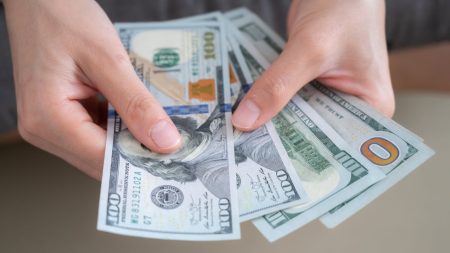Key takeaways
- 0 percent financing is a good choice if you have excellent credit and can afford the higher short-term payment.
- A cash rebate makes sense if you want a lower loan amount or a lower price on the car you’re buying.
- Both options are usually only offered by auto manufacturers with strict qualification requirements.
If you’re in the market for a new car, chances are pretty good that you’ll see flashy ads promoting cash rebates or 0 percent APR auto financing. The better deal for you ultimately depends on your monthly budget and credit score.
Keep in mind that these options usually come with strings attached, including requiring high credit scores and short repayment terms. Since auto manufacturers limit these offers to certain makes and trim lines, you’ll only qualify if you’re buying a vehicle with a promotional offer attached. To determine which financing deal is best for you, consider your goals and crunch the numbers.
What is a rebate on a car?
A car rebate is a post-purchase price adjustment, usually of between a few hundred and a few thousand dollars. You may see this advertised as “bonus cash.” This incentive is typically only offered by a vehicle’s manufacturer if you purchase it directly from a branded dealership.
Rebates essentially lower the price of your vehicle, though the “cash back” typically takes some time to process. The amount of the rebate may then be considered as part of your down payment or applied directly toward the amount you need to finance your purchase.
Myth: A cash rebate always lowers your tax
You might logically think that since auto taxes are based on a vehicle’s price, applying a rebate to lower your car’s price would reduce your car tax bill. Unfortunately, that’s only true if your state tax law allows for it. And although you won’t get a tax break using the rebate for your down payment on a financed purchase, you will end up with a lower loan amount and car payment.
Pros and cons of a cash rebate
Like any financial product, cash rebates come with benefits and drawbacks.
Pros
- Can be used for down payment. Cash rebates can be used toward your down payment, lowering your loan amount. A higher down payment could also help you qualify for a lower rate or longer term, reducing your monthly payment.
- You don’t need stellar credit to qualify. Unlike 0 percent down payment financing, rebates aren’t based on your credit score. That could make it a good option if you don’t meet the 780+ score that’s usually required.
- Acts as money in your pocket. If you don’t need the rebate for a down payment or to cover vehicle taxes, a cash rebate can simply be mailed to you as a check. It doesn’t have to go toward vehicle costs, so you can technically use it for any expense.
Cons
- Limited to higher-priced newer cars. Manufacturers’ rebates are designed to sell new vehicles, which means the starting point for your price negotiations is on the higher side.
- May limit financing choices. Some manufacturer rebates require you to use a specific lender, which may result in less competitive terms than you would find with a credit union or bank.
- You won’t always reduce your vehicle tax bill. Depending on the state you live in, you may still pay taxes based on the full purchase price, even if you use your rebate to reduce it.
What is 0% financing?
0 percent financing is a unique type of loan that doesn’t require you to pay any interest for the life of the loan. This is a common incentive among dealers to drive the sales of a specific make, model, year or trim level. 0 percent APR doesn’t necessarily mean no cost — there may still be other fees associated with the purchase.
This type of financing is typically reserved for borrowers with superb credit and stable, verifiable income.
Myth: 0 percent APR means no costs beyond the price of the car
Although you don’t pay any interest charges, you’re still on the hook for state-mandated fees like sales tax and documentation, destination and inspection fees. And since 0 percent APR offers are typically limited to shorter repayment terms, you can expect a higher monthly payment than you’d get on a long loan.
Pros and cons of a 0% APR
Interest-free financing deals can be a great way to pay for a car, but consider the drawbacks before making a plan.
Pros
- Lower monthly payments. Since you won’t be responsible for paying interest, your monthly payment could be lower than it would be with the cash rebate option. Keep in mind that your monthly payment depends on the cost of the vehicle and the repayment term you choose.
- Quicker repayment. Most 0 percent loan terms are four years or less, which means your car is paid in full faster.
- Simple payment schedule. Since you’re not paying any interest, your entire payment will go toward your loan balance, with no accrued interest charges.
Cons
- Stringent qualifying standards. If you don’t have exceptional credit and proof of enough stable income to qualify for the higher short-term payment, 0 percent financing is probably not an option for you.
- Can be more expensive. Since 0 percent deals are only offered for new cars, you’ll likely pay more for the new car than you would for a used car financed at a higher APR.
- High payments could become unaffordable. 0 percent financing terms don’t typically last longer than three years, which makes your payment much higher than the five and seven-year terms offered on most auto loans.
0% APR deals are less common these days
A manufacturer’s willingness to offer a 0 percent APR depends largely on the economy. When the economy is strong, you’re more likely to find “low APR” deals, with rates starting around 2.99 percent. At the start of the COVID-19 pandemic, however, amid supply chain issues and economic uncertainty, 0 percent loans were very commonplace and even offered on extended loan terms.
How to choose between 0% financing and a rebate
The best option will depend on your credit score and how important it is for you to get a new vehicle. If you want to haggle for a lower price, or don’t mind buying a used car, you may want to skip both options.
1. Determine whether you qualify for 0% financing
Qualifying for 0 percent financing depends on the type of car you’re looking to buy, your credit score, debt-to-income ratio and income.
If the manufacturer or dealer offers this incentive, you’ll need a credit score of 780 or higher to be in the running. Lenders may also have specific income requirements since you’ll typically need to qualify for a payment with a 3-year term.
If you don’t qualify, you may be better off shopping at your credit union, a bank or checking an online marketplace like Bankrate to see if it offers a competitive rate.
2. Find out how much the rebate covers
Cash rebates can be used to supplement your down payment or even pad your savings account if you opt to get the rebate as a check.
Find out exactly how the rebate will be applied to your purchase. In some states, the money may actually be deducted from the vehicle’s purchase price before taxes are calculated. This gives the rebate an added benefit of reducing the taxes you pay on the purchase. The key is to find out in advance exactly what the rebate covers.
You can find rebate — and 0 percent APR — deals on manufacturer websites and trusted sources like Edmunds and J.D. Power.
Bankrate tip
Visit the manufacturer’s website for the vehicle you want to purchase or browse Edmunds and J.D. Power. You can sort your search results by manufacturer or vehicle type to find the best rebate or financing deal. In many cases, you may be able to save up to $2,000 off the cost of some SUVs, up to $500 on many trucks, and between $500 to $1,000 on sedans.
3. Calculate the cost of both options
To compare the payment options for both the 0 percent APR and the cashback option, use an auto loan calculator. For the 0 percent option, the total amount of the loan would be the price of the car since no interest is charged. To calculate the cash back option, subtract the cash back amount from the total loan amount.
For example, a manufacturer may offer either 0 percent financing or a rebate of $1,000 on a car worth $35,000. You qualify for a 4.77 percent APR on a loan term of 48 months. In this case, the 0 percent deal is clearly the winner — not only is the monthly payment lower, but your total savings is more than $2,000 higher.
| Cash rebate | 0% APR | |
|---|---|---|
| Loan amount | $34,000 | $35,000 |
| Monthly payment | $779 | $729 |
| Total loan interest | $3,414 | $0 |
| Total savings | $1,000 | $3,414 |
But if the cash offer is greater — say, $5,000 instead of $1,000 — the math changes. In that case, the cash offer offers the overall better deal.
| Cash rebate | 0% APR | |
|---|---|---|
| Loan amount | $30,000 | $35,000 |
| Monthly payment | $688 | $729 |
| Total loan interest | $3,012 | $0 |
| Total savings | $5,000 | $3,012 |
Account for your rebate
When determining how much you will spend, know that a rebate is applied after you negotiate the final sale price. If you plan to finance $35,000 and have a $1,000 rebate, you should do the math for a $34,000 loan.
Bottom line
When you feel ready to make a decision, consider the auto loan rate costs versus savings carefully. Zero percent APR will mean you don’t pay anything in interest, but you could offset interest paid with a high-value rebate. Even if you qualify for a dealer’s low APR or cash rebate option, applying for loan preapproval can help you compare deals and get the best option for you.
While both cash rebates and 0% APRs are appealing offers to prospective new car owners, it all comes down to what you’re looking for. Commit to researching the available deals and reading the fine print to compare them carefully. Don’t lose sight of your other criteria when making a selection — create a checklist to shop by and remember what factors are important to you.
Why we ask for feedback
Your feedback helps us improve our content and services. It takes less than a minute to
complete.
Your responses are anonymous and will only be used for improving our website.
Help us improve our content
Read the full article here









